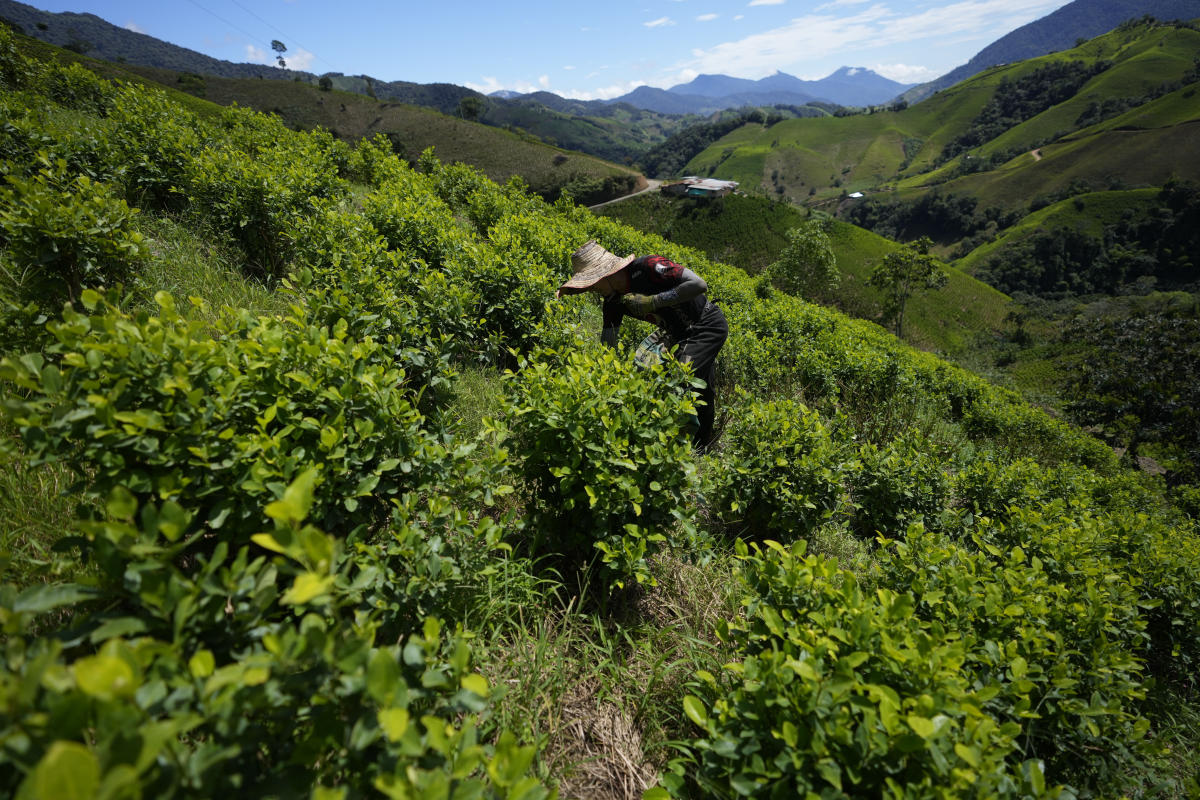EL PLATEADO, Colombia (AP) — El Plateado in the rugged mountains of southwestern Colombia may seem like a typical rural community until you hear the distant sound of machine gun fire and mortar shells.
The remote town of 12,000 is located in the Micay Canyon, where rebel groups have been holed up for the past two years despite efforts by Colombian President Gustavo Petro to reach peace deals with the armies under a strategy known as total peace.
The canyon is currently a stronghold of a rebel group that broke away from the former Revolutionary Armed Forces of Colombia (FARC). This group attacks military positions, while the army responds with heavy infantry.
“It hurts me to see my children growing up in this war,” said Edilma Acuechantre, a 34-year-old woman who makes a living picking coca leaves from local farms, selling the harvest to drug traffickers who convert it into cocaine.
She said she keeps a small backpack with clothes, soap and toothbrushes in her wooden house, in case she has to flee her village quickly.
Micay Canyon plays a major role in the illegal drug and arms trade.
It connects the Andes Mountains and the Pacific Ocean along dozens of remote trails used to transport cocaine to small ports, where it is loaded onto makeshift submarines bound for Central America. Experts say it also serves as a corridor for weapons to Colombia’s interior.
The former FARC faction, known in Spanish as FARC-EMC, has set up roadblocks to control parts of the Micay Canyon region and guards coca plantations on the mountain slopes.
The fighting between the rebels and the army is mainly taking place on the slopes, but the sounds of confrontation can be heard in El Plateado, where residents try to lead a normal life by selling goods, working in shops and picking coca leaves on the coca plantations.
It has been nearly eight years since the Colombian government signed a peace accord with the FARC, a deal seen as an important step in ending decades of rural violence in the South American country.
Under the 2016 agreement, more than 14,000 fighters laid down their weapons and formed a political party that was guaranteed 10 seats in Colombia’s parliament.
The rebels stopped levying taxes on cocaine producers, punishing thieves in small villages and policing illegal mines.
Experts say the Colombian government was too slow to fill the power vacuum left by the retreating rebels. Now a host of smaller groups, including the FARC-EMC, the National Liberation Army and the Golf Clan, are fighting to take over rural areas formerly under FARC control, such as Micay Canyon.
This threatens to undo years of progress in peacebuilding in Colombia.
Most members of the FARC-EMC withdrew from peace talks with Petro’s government in April after the government blamed the group for killing an indigenous leader and suspended a ceasefire. The FARC-EMC had also expressed growing frustration with government efforts to patrol villages in the gorge and seize drug shipments.
President Petro called the area “the great cocaine exchange” of the FARC-EMC and said the canyon provides the group with one of its main sources of financing.
The president has said he wants to bridge the gap to offer development projects to farmers who currently depend on coca cultivation.
Kevin Andrés Arcos, president of the city council of the town of El Plateado, says that most of the town’s residents earn their living by harvesting or planting coca leaves.
According to Arcos, the roads in the region are poor and other crops are not profitable.
____
Associated Press writers Astrid Suárez and Manuel Rueda contributed from Bogota, Colombia.
